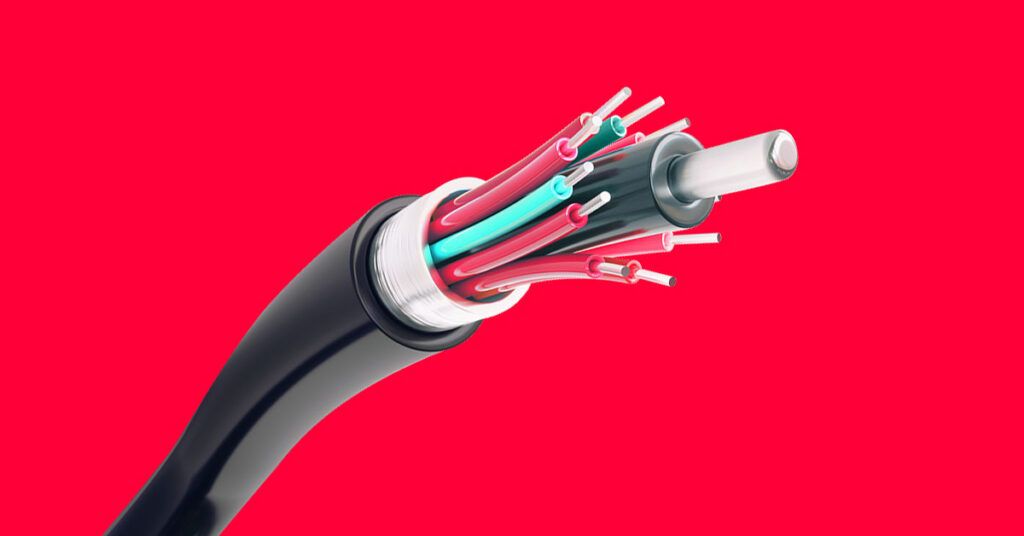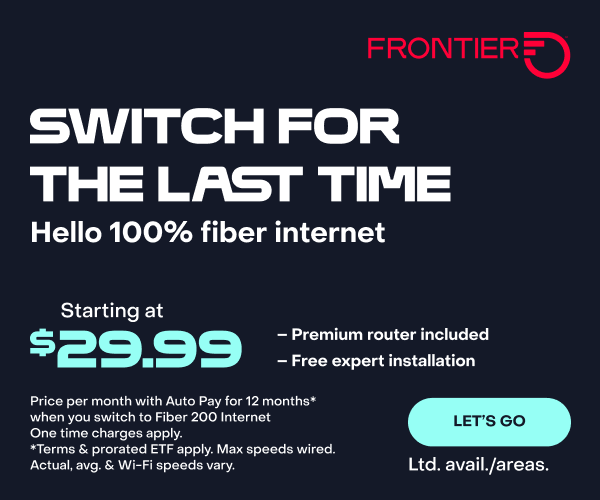
#1 Fiber Game Changer: It Uses Light to Send Data
Updated on May 11, 2023
Internet that’s as fast as light? Absolutely. You just have to turn to fiber optic cables. Fiber cables literally carry data using beams of light shot out by lasers. Let’s discuss.
How does light carry data?
Have you ever watched a movie where someone uses a mirror or flashlight to send a message with Morse code? Well, fiber optic internet cables use light to carry messages in much the same way, except the light travels inside a thin glass fiber rather than being broadcast out into the world.
Technically, here’s how it works: Any data transmitted over the internet is encoded in binary—a numbering system with just 0s and 1s. For example, in the most popular version of binary notation, “A” is 01000001 while “B” is 01000010 and “Z” is 01011010.
Any long article or complex file is made up of tens of thousands of 0s and 1s that can be transmitted incredibly quickly with the flashes of light sent through fiber optic cables by lasers. When there’s a pulse of light, it’s a 1; when there’s no pulse of light, it’s a 0. The computers running things at either end are able to handle hundreds of thousands of pulses per second, which is why they can transfer such large files so quickly.
It’s important to note, copper cables also use binary to transmit data. However, instead of flashes of light, the voltage of the cable is changed to transfer information.
How do fiber optic cables work?
Okay, so now that you understand how something like this website can be converted into light, let’s look at how the actual fiber optics work to transmit it hundreds or thousands of miles, and even across oceans.
Fiber optic cables are made up of three parts: a thin inner “core,” a slightly thicker “cladding” and a protective external “buffer” layer that keeps the inner layers safe from the external environment.
The core and the cladding work together to transmit data using a principle called “total internal reflection.” Both layers are made from different kinds of ultra-pure glass. The glass in the core has a higher “refractive index” than the glass in the cladding, which means light travels slightly more slowly through the core than it does through the cladding. (This has some interesting effects on light that passes from one medium to the other, which you can see for yourself when you put your arm in a swimming pool: It looks like it’s bending because the water has a higher refractive index than the air.) Because of the light’s shallow angle as it’s sent through a fiber optic light cable, however, each beam gets trapped in the core. When it hits the cladding, it’s reflected back in such a way that it continues its journey, bouncing along from side wall to side wall.
In theory, with perfect glass you could make a fiber optic line that could carry light indefinitely. Unfortunately, the real world gets in the way. With even the best fiber optic cables, there’s some signal “attenuation” or loss. This means there are practical limits to how far you can send data before you need a “repeater,” which resends the signal, or an “amplifier,” which boosts the existing signal.
Fiber has bandwidth to support multiple users?
Fiber optic cables can transmit a huge amount of information at fast speeds, allowing for wider bandwidth, Because of this, your connection can support many users on your network, streaming, gaming, uploading all at the same time.
And because fiber optics uses light to transmit data, dozens of fiber optic lines can be bundled together into thick cables to transmit thousands of gigabits per second. This is how Google has a cable with a bandwidth of 60 terabytes of data per second that connects the U.S. and Japan.
Why isn’t everything fiber yet?
Well, we’re going to let you in on a little secret: The entire internet is already running on fiber optics. All the big cables that transmit information between your internet service provider and data centers around the world are fiber. When you send a Facebook message to someone on a different continent, it crosses the ocean using a fiber optic cable. Even if you use 5G data with your iPhone, the information is only traveling wirelessly until it gets to the cell tower—then it’s on the fiber optic internet.
This means if you’re fortunate enough to live in a location where you can get a fiber connection to your home, you should go for it. It will give you fast upload and download speeds and reliability. Plus, fiber is the future.
Frontier Fiber will take your connections to a new level: 2Gig
Convinced you need fiber? You’re working from home, gaming, streaming more than you ever thought. Find out the advantages of Frontier Fiber here. Then check here to see when it’s available at your address.
Product features may have changed and are subject to change.




So does this mean that Frontier internet is going to fiber optics?
Assume we are a long way from fiber connections.
Frontier has expanded FiberOptic services in 7 states and is ramping up FiberOptic to service 12 states in the year 2022. If FiberOptic internet isn’t available near your home, you might be able to get our traditional internet service. Thanks. Sue
Frontier has expanded FiberOptic services in 7 states and is ramping up FiberOptic to service 12 states in the year 2022. Frontier Fiber is building for the future with gig speed. Thanks. Sue